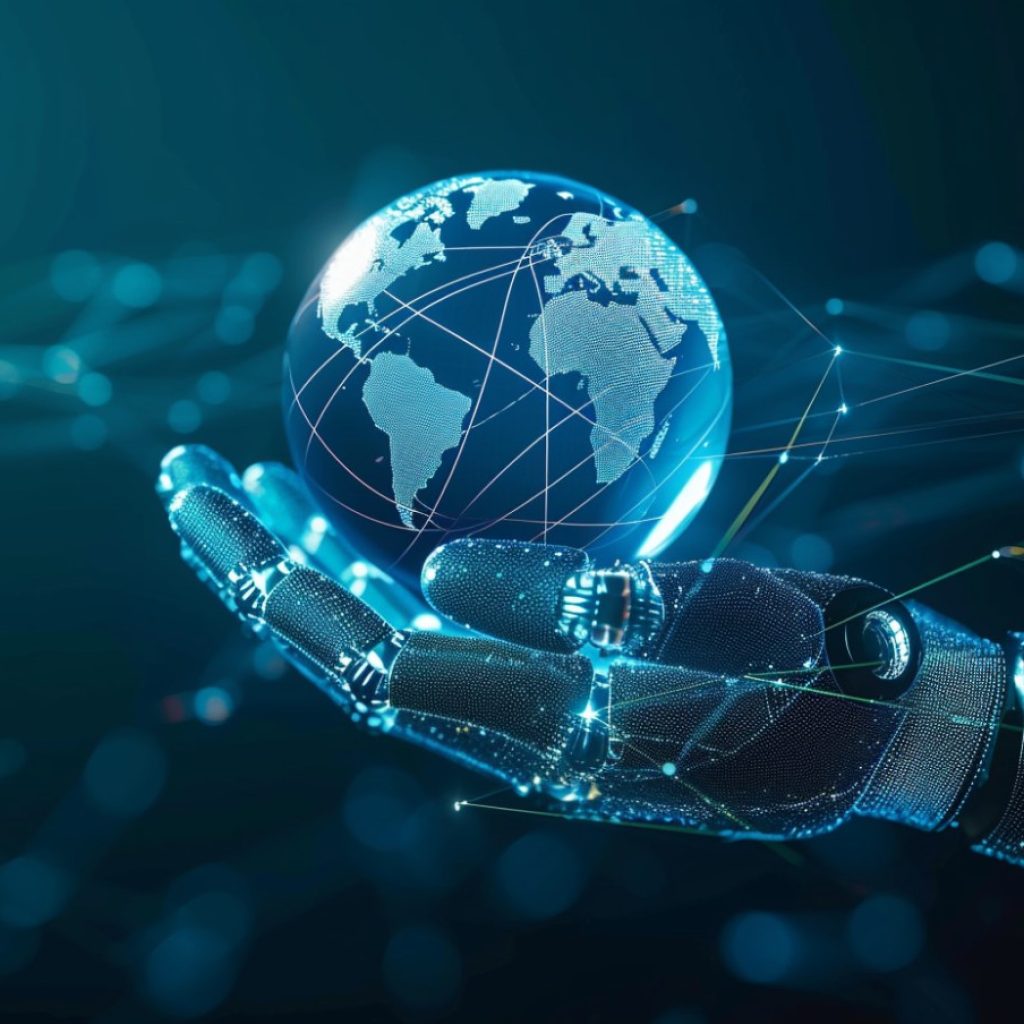The digital landscape has undergone a significant transformation through the rise of concepts such as the metaverse, Artificial Intelligence (AI), cryptocurrency, and blockchain technologies. Web3, the future of digital experiences and economies, combines these innovative technologies to create an immersive and decentralized virtual world. With the convergence of these technologies within Web3, along with real-life applications, we can project further transformations in the economy and tech companies, leading the way into this dynamic space.
The convergence of technologies in Web3
Web3, as a decentralized ecosystem, incorporates not only AI and the metaverse but also virtual reality (VR) and augmented reality (AR) technologies. These technologies operate on decentralized models powered by blockchains, enabling seamless interoperability and exchange of digital assets and decentralized applications (dApps) across various platforms.
Decentralized Applications (dApps) and AI in Web3
dApps play a pivotal role in Web3, particularly in machine learning. They are essential in implementing AI functionalities and are increasingly used in Non-Fungible Tokens (NFTs). Future NFTs must go beyond static images, exhibiting dynamic behaviors through AI-driven intelligence.
The promise of converging Metaverse, AI, and Blockchain
At the 2023 London Blockchain Conference, Robert Rice, the CEO of Transmira, proposed the convergence of the metaverse, AI, and blockchain. He believes that this convergence holds significant promise in accelerating development and enhancing security within Web3.
Challenges and advancements in the Metaverse
While the metaverse presents a fascinating virtual world, its access, and infrastructure remain limited. Only 25% of the global population is expected to access 5G by 2025, hindering the metaverse’s full-scale adoption. Furthermore, the currency utilized in the current metaverses is predominantly cryptocurrency, particularly Ethereum. However, future metaverses may incorporate central bank digital currencies (CBDCs) and traditional forms of payment for greater inclusivity.
Real-Life applications
The combination of blockchain and AI offers numerous real-life applications. AI models executed on blockchain networks can optimize transactions, stock orders, and customer experiences. In the healthcare industry, AI can analyze vast patient data stored securely on the blockchain, while the pharmaceutical sector can benefit from accelerated drug trials and enhanced patient tracking.
Blockchain’s potential in the Metaverse
Blockchain’s attributes can significantly improve data-related aspects of the metaverse, including gathering, storage, and interoperability across platforms. It also enables transparent crypto transactions within the metaverse, ensuring a reliable and immutable record of all transactions.
Companies at the forefront of Web3 convergence
IBM is one of the leading players in building a strong blockchain infrastructure for Web3. Its blockchain technology enables companies to create their own ecosystems for supply chain management, collaborating with industry giants like Walmart and UBS. IBM’s hybrid cloud and AI businesses are expanding, contributing to its success in the Web3 space.
Roblox, the online gaming platform, is testing generative AI in its metaverse platforms, allowing all users to create unique content easily. Its strategic partnership with Meta’s VR product, the Meta Quest, provides an advantage in the competitive landscape.
Exploring AI cryptocurrencies
AI cryptocurrencies, like The Graph (GRT) and Fetch.ai (FET), are gaining traction in the mainstream sector. The Graph, an Ethereum-based cryptocurrency, indexes data from various networks, showcasing promising potential. Fetch.ai, on the other hand, Fetch.ai has secured significant funding to enhance monetization and utilize AI tools on its platform.
Challenges and risks in the Web3 space
The regulatory landscape remains uncertain for metaverses and cryptocurrencies, presenting challenges for investors. Until clearer regulations are established, investing in Web3 should be cautiously approached.
Web3 represents an exciting and transformative era for digital experiences and economies. The convergence of the metaverse, AI, crypto, and blockchain technologies opens up new possibilities for innovation and growth. Companies like IBM and Roblox are pioneers in leveraging these technologies, while AI cryptocurrencies hold promise for the future. Despite challenges and risks, Web3 presents opportunities for investors willing to explore this dynamic and evolving landscape.





